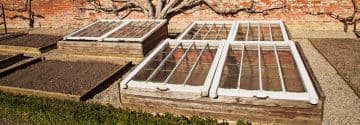For RHS Level 2 – R2103 Maintaining Plant Health, you need to know the name of one active ingredient of one example of each type of herbicide:
Contact Herbicide – diquat – e.g. Weedol – Contact herbicides are non-selective and non-residual and work simply by scorching off weed foliage. This makes the ready-to-use formulations ideal for controlling annual weeds and perennial weed seedlings growing in between garden plants, which can simply be protected using polythene, cardboard or an upturned bucket.
Residual Herbicide – flufenacet – e.g.Path Weedkiller Concentrate – Residual herbicides can be soil-acting or foliar-acting, the herbicide remaining in the soil for weeks or months, depending on the active ingredients’ properties. Some can be used around plants, whereas others can only be used in uncultivated areas and/or hard surfaces
Translocated Herbicide – glyphosate – e.g. Resolva 24H Liquid Concentrate – translocated herbicides are non-selective and non-residual. When applied to foliage translocated herbicides moves down into the root system of the weed. This makes systemic herbicides ideal for controlling deep-rooted perennial weeds. The most effective time for spraying glyphosate is mid- to late summer when the weed has a large surface area.
Selective Herbicide – mecoprop-P – e.g. Green Up Lawn Feed & Weed Plus Mosskiller – selective herbicides target broad-leaved weeds and leave narrow-leaved plants (grasses) unharmed at the normal dilution rate.
Up to date Knowledge
In recent years, many garden chemicals have been withdrawn. The RHS examiners note that “Most candidates could accurately describe the different actions of the main types of herbicides but needed an up to date knowledge of the active ingredients as there are constant changes to approved chemicals.” You can find up-to-date advice on the chemicals that are still available on the RHS website, using the following links:
This page is part of our 6-week RHS revision email series. If you’re currently revising for exams, join our list to ensure you don’t miss any new material or updates.



Please help to explain the active ingredient use for herbicide not in biology name the real name I can lay hands on thanks